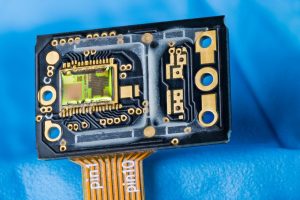Rigid Flex PCB Design Guidelines
Rigid Flex PCBs are used in a variety of applications due to their reliability and cost effectiveness. However, rigid flex circuits are challenging for PCB designers as they must take into account both electrical and mechanical dynamics. To make the best possible product, it’s important to follow a few key design guidelines when working with a flex rigid pcb manufacturer.
Avoid placing pads or vias on the bending area of the flex portion of a PCB. These areas will deliver mechanical stress that may compromise the integrity of the plated hole. Instead, place these components in stationary regions of the board that aren’t subjected to bending and movement. In addition, pad dimensions should be large enough to prevent bending from straining the copper trace.

It’s also important to keep in mind that as current flows through a rigid flex circuit, heat will dissipate. This can negatively impact the performance of the circuit and lead to damage. To help reduce this, it’s recommended that designers use a thermal management system in their designs to dissipate the excess heat.
Rigid Flex PCB Design Guidelines and Manufacturing Tips
Another consideration when designing a flex rigid pcb manufacturer is to avoid placing traces directly on top of each other. This can cause the traces to crack under the stress of repeated bending and handling. To avoid this, it’s advisable to stagger the layers in a double-sided flex circuit or add an offset between the traces on both sides of a single-sided one.
Lastly, it’s important to consider the materials in your rigid-flex PCB design. The choice of material can have a significant impact on cost, performance, and manufacturability. A good fabricator will be able to help you choose the right materials for your specific application.
Flex rigid PCBs find widespread use in a diverse range of industries and applications. In consumer electronics, they enable the development of sleek, compact devices such as smartphones, tablets, and wearables, where space optimization and design flexibility are paramount. Automotive manufacturers incorporate flex rigid PCBs into vehicle infotainment systems, dashboard displays, and advanced driver assistance systems (ADAS) to deliver enhanced functionality and reliability in challenging environments.
Rigid-flex PCBs are more complicated than their rigid counterparts and must be manufactured with care to avoid manufacturing errors. Fortunately, there are several tools available that can assist you in the design process and ensure your rigid-flex circuit is ready for fabrication. Some of these tools include PCBway’s detailed calculator, which allows you to see how much your design will cost before submitting it for production.
Using these tools will help you avoid the most common mistakes in rigid-flex PCB design and fabrication. By following these simple tips, you can design a robust, high-quality rigid-flex circuit that will perform reliably in the field. If you have any questions about the flex rigid pcb manufacturing process, please contact us. We’d be happy to help!
